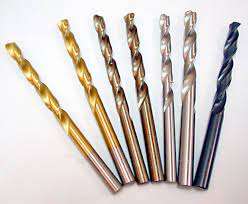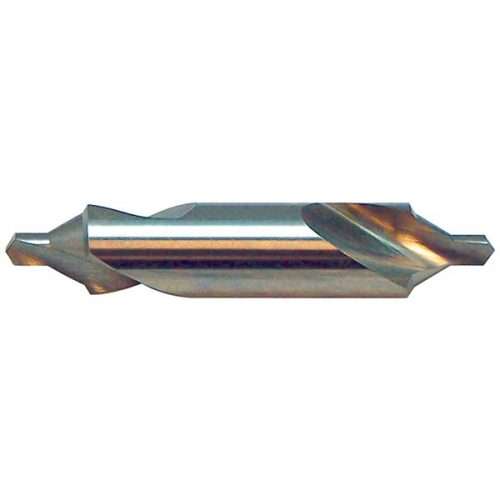
CNC drilling is a highly precise and efficient method for creating holes in various materials. An essential part of this process is selecting the right drilling tool for your specific application and material. This comprehensive guide will explore various CNC drilling tools and provide valuable insights into selecting the appropriate tool based on your project’s requirements.

Twist Drills and their Types
Twist drills are the most widely used CNC drilling tools, characterized by their helical flutes that run along the length of the tool. These flutes help in efficient chip removal and provide stability during drilling. Twist drills are versatile and can be used for drilling cylindrical holes in a wide range of materials, including metals, plastics, and wood.

Types of twist drills
1 HSS (High-Speed Steel) Twist Drills:
Made from high-speed steel, these twist drills offer good performance and are suitable for drilling various materials such as aluminum, mild steel, and plastics. HSS drills are economical and provide a balance between cutting speed and tool life.
2 Carbide Twist Drills:
Featuring carbide cutting edges, these twist drills provide higher wear resistance, making them ideal for drilling harder materials like stainless steel, titanium alloys, and cast iron. Carbide drills maintain their sharpness for a longer period, resulting in increased productivity.
3 Coated Twist Drills:
These twist drills have a special coating (such as TiN, TiCN, or TiAlN) that improves tool life and performance, especially when drilling abrasive materials or at high cutting speeds. The coatings reduce friction and heat generation, minimizing tool wear and extending the life of the drill.
Center Drills and Their Types
Center drills are an essential tool that is used to create small conical indentations, also known as center holes, at the beginning of a drilling operation. The primary purpose of these center holes is to guide and stabilize larger drills, thereby ensuring accurate and straight hole alignment. Center drills come in various sizes and materials, and each one is designed to suit specific drilling operations. For example, if you need to drill deep holes, then you should use a longer center drill, while a shorter center drill is perfect for shallow holes.

center drills
There are two major types of center drills;
- Standard Center Drills: These center drills have a 60° included angle and are commonly used for general-purpose applications.
- Bell-Type Center Drills: Featuring a larger 120° included angle, bell-type center drills are used to create center holes with a wider base for better support of larger drills.
In addition to the two types of center drills mentioned, there are other options available depending on the specific application. Some center drills have a different included angle, such as 90 degrees or 100 degrees, which may be more suitable for certain materials or drilling operations. Center drills come in different shapes, like double-ended or conical tips. These variations allow for more precision and flexibility in drilling, leading to better results. Choosing the right center drill is crucial for accurate centering and efficient drilling.
To select the perfect center drill for your project without misalignment or instability, consider the center hole geometry, intended design, and size of the following drill.
Additional CNC Drilling Tools
In addition, to twist drills and center drills, there are other types of CNC drilling tools available that can enhance your drilling capabilities. These include spade drills, gun drills, counterbore drills, and countersink drills.
| CNC Drilling Tool | Description | Common Applications |
|---|---|---|
| Spade Drills | Ideal for drilling large-diameter holes, spade drills have replaceable cutting inserts that allow for quick and cost-effective tool changes. | Used in the aerospace and automotive industries for drilling large holes in aluminum parts. |
| Gun Drills | Designed for deep hole drilling, gun drills feature a long, slender body and a coolant channel to remove chips and dissipate heat. | Used in the medical, oil and gas, and aerospace industries for drilling deep, precise holes in hard materials. |
| Counterbore Drills | Used for creating a flat-bottomed hole with a smaller diameter hole in the center, counterbore drills allow for the insertion of screws or bolts with a flush or recessed head. | Used in woodworking and metalworking applications for countersinking holes and creating precise cavities. |
| Countersink Drills | These drills create a conical hole that allows for the insertion of flat-head screws or bolts, ensuring a flush surface with the surrounding material. | Used in metalworking, woodworking, and plastic fabrication for creating countersunk holes. |
Selecting the Right CNC Drilling Tool: Key Factors to Consider
Selecting the appropriate CNC drilling tool is crucial for achieving optimal results and maximizing the efficiency of your drilling operations. To make the best decision, consider the following factors:
| Factor | Considerations |
|---|---|
| Material Type | Understand the properties of the material being drilled, such as hardness, abrasiveness, and heat sensitivity. Choose a tool designed to work efficiently with the specific material to ensure optimal performance and tool life. |
| Hole Diameter and Depth | Ensure the chosen tool can create the desired hole size and has sufficient length to reach the required depth. Some tools may be better suited for larger diameters, while others excel in deep-hole drilling applications. |
| Cutting Speed and Feed Rate | Select a tool that can withstand the cutting speeds and feed rates required for efficient material removal. The tool’s material and geometry, as well as the workpiece material, can impact the optimal cutting parameters. |
| Tool Life and Wear Resistance | Opt. for tools with coatings or made from materials that offer extended tool life and wear resistance. This is particularly important when working with hard or abrasive materials, as tool wear can significantly impact productivity and quality. |
| CNC Machine Compatibility | Ensure the selected tool is compatible with your CNC machine in terms of shank type, collet size, and tool holder configuration. Using incompatible tools can lead to decreased performance, tool breakage, or even damage to the machine. |
| Tool Geometry | Consider the tool’s geometry, including point angle, helix angle, and flute design. These factors can impact chip removal, cutting forces, and tool stability, ultimately affecting the quality of the drilled hole. |
| Coolant Application | Some CNC drilling tools require the use of cutting fluids or coolants to reduce heat generation and improve chip evacuation. Ensure the selected tool is compatible with the coolant application method used by your CNC machine. |
| Budget Constraints | While it’s essential to choose the best tool for the job, also consider your budget. High-performance tools may come at a higher cost, but in some cases, the increased productivity and tool life can offset the initial expense. |
| Production Volume | Determine the production volume of your project. For high-volume production, it’s crucial to choose a tool that can maintain its performance over an extended period, reducing downtime and tool changes. |
| Tool Availability and Lead Times | Consider the availability of the desired tools and their lead times. Choosing a tool that is readily available or has short lead times can help minimize production delays and ensure that your project stays on schedule. |
Conclusion
Selecting the right CNC drilling tool is crucial for achieving high-quality results and efficient production in your project. Understanding the various types of CNC drilling tools and their applications can help you make an informed decision based on your project’s unique requirements.
Prolean’s CNC drilling service specializes in delivering exceptional results tailored to your specific needs. Our team of experts will help you select the right drilling tools and optimize your drilling processes to ensure optimal performance and longevity of your final product.
FAQs
What are the most common types of CNC drilling tools?
The most common types of CNC drilling tools are twist drills, step drills, and center drills.
How do I choose the right CNC drilling tool for my project?
Consider factors such as the material being drilled, hole diameter and depth, cutting speed and feed rate, tool life and wear resistance, and CNC machine compatibility.
What are the advantages of using coated drilling tools?
Coated drilling tools offer increased tool life, wear resistance, and performance, especially when drilling abrasive materials or at high cutting speeds.
How does choosing the inappropriate drilling tool impact the final result?
Choosing the inappropriate drilling tool can lead to poor hole quality, inaccurate hole positioning, and decreased productivity. It can also result in excessive tool wear, breakage, or damage to the workpiece or CNC machine. It is important to select the right drilling tool based on the specific requirements of your project to achieve optimal results and maximize efficiency.




0 Comments